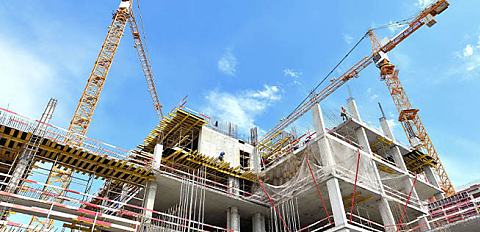The Australian Bureau of Statistics (ABS) has revealed that a total of 13,647 dwellings were approved in August 2023 (in seasonally adjusted terms), up 7 per cent after the drop of 7.4 per cent in July.
Total dwelling approvals (seasonally adjusted) across the nation were mixed, with NSW and Victoria recording the strongest increase of 12.5 per cent and 22.2 per cent (3,802 and 4,842), respectively, while Western Australia also showed a significant rise of 12.3 per cent (1,242).
Conversely, Queensland had the greatest decrease, down 26.9 per cent with only 2,004 total dwelling units approved.
Tasmania and South Australia also saw reductions of 10.1 per cent and 6.9 per cent, with only 232 and 922 total dwelling units approved.
The ABS also found that there was a 0.5 per cent increase in the value of total buildings approved in August, taking the total value of new approvals to over $13 billion.
The value of total residential buildings increased by 2.3 per cent in the month, reaching $7.09 billion, according to the bureau.
This increase followed approvals for private sector houses rising in all states, led by Western Australia up 13 per cent to 1,104.
Victoria followed after rising 9.9 per cent to 2,807, South Australia was up 4.7 per cent to 773, Queensland rose 3.1 per cent to 1,770 and NSW approvals hitched up by 2.4 per cent to 1,864.
ABS head of construction statistics Daniel Rossi stated the increase in the number of dwellings sanctioned was driven by the approvals of private sector houses that “rose by 5.8 per cent, following three months of stable movements”.
“Approvals in the more volatile private sector dwellings excluding houses series rose by 9.4 per cent, following a 14.6 per cent fall in July,” Mr Rossi added.
Even with the overall increase in the value of buildings approved in August, the non-residential sector saw a monthly decrease of 1.5 per cent, down to just over $6 billion.
RBA rate rises not due to impact industry until ‘the second half of 2024’
Despite the increase in building approvals throughout August, the Housing Industry Association’s senior economist Tom Devitt said the market still had not seen the full impact of the previous rate rises.
Mr Devitt stated: “Housing and finance data continues to be weighed down by the interest rate increases that the RBA commenced more than a year earlier.
“In the three months to August 2023, lending for the purchase or construction of new homes was 30.3 per cent lower than at the same quarter a year earlier.
“Despite a small rise in building approvals in the month of August, building approvals remain 17.5 per cent lower in the latest three months compared to a year earlier.
“This decline in building activity is in contrast to the low level of unemployment and strong population growth. The impact of the RBA’s tightening cycle is not expected to produce a trough in new house commencements until the second half of 2024. Any further increases in interest rates will deepen and prolong this trough.”
In its Economic Insights update, the Commonwealth Bank of Australia said it expects that the dwelling approvals “weakness” will continue for the remainder of 2023 before “more favourable conditions stimulate the sector next year”.
It added: “While approvals are currently very weak, our view for the monetary policy outlook is that the [RBA finished] its tightening cycle and that 100 bps of cuts will be delivered in 2024.
“This should have a positive impact on building activity as lower rates and softer construction inflation stimulates demand.”
Senior economist at ANZ, Adelaide Timbrell, added that the bank does not expect this to be a “turnaround” for building approvals, noting that developer incentives continue to be undermined by higher building costs and funding rates.
Reflecting on the monthly increase in approvals, Master Builders Australia chief economist Shane Garrett said further growth was required.
“The pipeline of higher density home building activity, which is critical to ensuring adequate rental supply, has been weak since even before the pandemic,” Mr Garrett stated.
“We still need to see a sustained improvement in the volume of higher density home building in order to relieve inflation which is at 15-year highs.”
The chief executive of Master Builders Australia, Denita Wawn, added that the government needed to provide support, not hindrance for the industry.
Ms Wawn stated: “Builders and tradies have a big job ahead of them to ensure we can build enough homes to start tackling rental inflation and meeting our Housing Accord objectives.
“We need to ensure tradies are spending as much time as possible on the tools without unnecessary delays and disruptions.
“The cost of building homes continues to be inflated through unnecessary delays and barriers including planning impediments, lengthy approvals processes and high developer charges.”
[Related: Building approvals continue downward trajectory: ABS]

